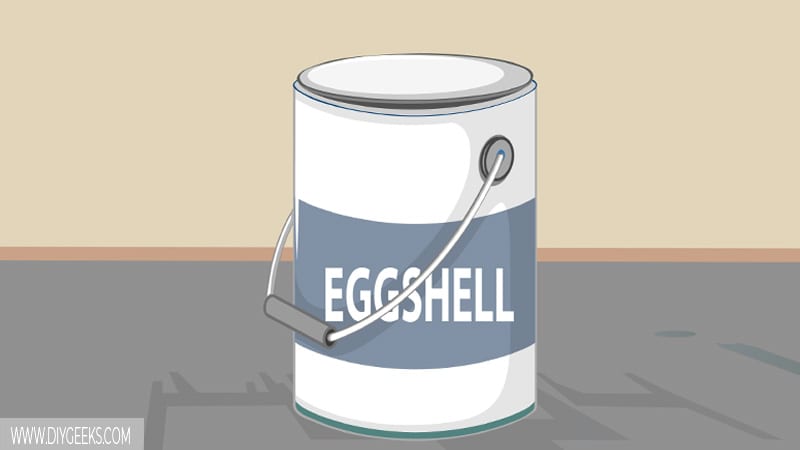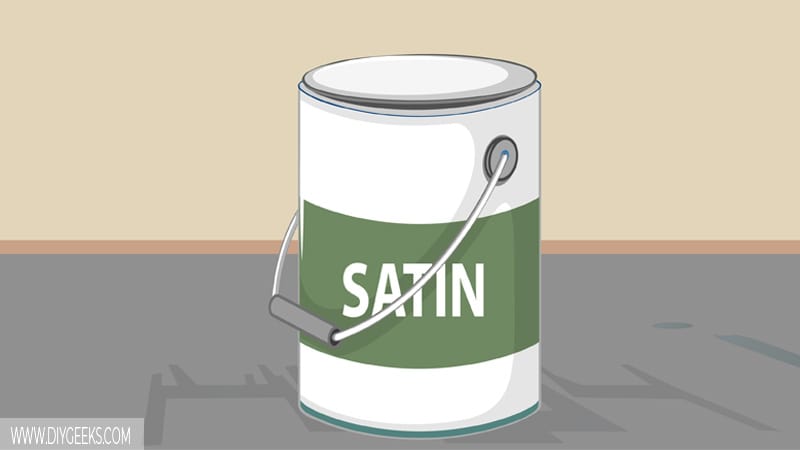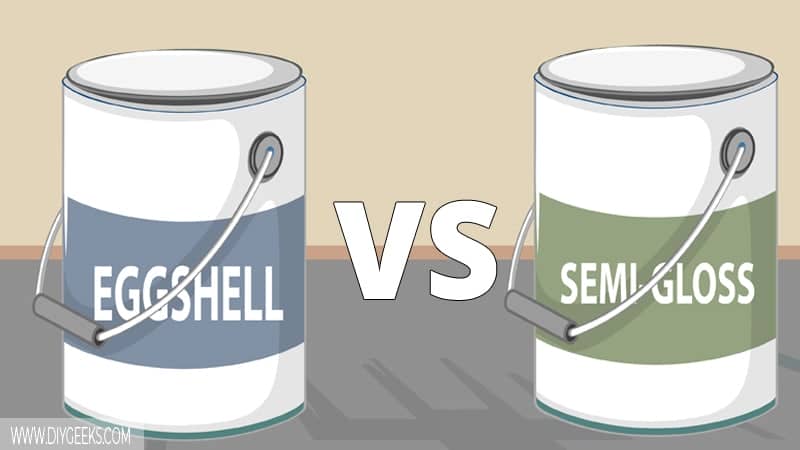Eggshell paint is a finish type that contains a very low sheen (or luster) amount, while satin paint is a finish type that contains a moderate level of sheen.
Eggshell paint has a thinner viscosity, has less sheen (or luster), and dries faster than satin paint. Satin paint has a higher sheen amount, requires fewer coats, is more durable and easier to clean, and offers better wood protection than eggshell paint.
What is Eggshell Paint?

Eggshell paint is a finish type that falls between flat (matte) and satin paint in terms of sheen amount. It creates a dull textured finish that is slightly reflective or glossy. It’s named “eggshell” as its finish mimics the appearance of the eggshell surface.
Eggshell paint is usually water-based (there are oil-based versions too), with a low sheen or gloss in its formula.
You can use eggshell paint for the following things.
- To give wood a color.
- To tint clear coats.
- If you want to create murals and other designs on walls.
- To paint decorative ornaments like flower vases and ceramics.
- If you want to cover spots and imperfections on the surface.
What is Satin Paint?

Satin paint is a finish type that falls between eggshell and semi-gloss in terms of sheen amount. It creates a dull mid-gloss finish that slightly reflects light and highlights surface imperfections.
Satin paint is versatile and is used over different interior surfaces, including walls, ceilings, and trims. Its finish has better moisture resistance than flat and eggshell, but worse than semi-gloss and high-gloss paint.
Eggshell vs Satin Paint
The differences between eggshell and satin paint are listed below.
Paint Thickness
Satin paint is thicker than eggshell because it contains more sheen (or luster) on its formula and is usually oil-based.
Eggshell paint has a thin viscosity as it has less sheen on its formula, is usually water-based, and has a simpler formula.
Sheen Amount
Satin paint has more sheen on its formula than eggshell paint. The difference in sheen amount makes both paints have different finish types, dry time, and surface protection.
Dry Time
Eggshell paint dries faster than satin paint as it has a thinner viscosity, doesn’t contain extra additives, and has less sheen amount.
Satin paint takes longer to dry because it has a thicker viscosity, more sheen amount, and is usually oil-based.
Coat Number
You need fewer satin paint coats for proper coverage and durability. Satin paint has a thicker viscosity and covers more surface with one coat.
You need more eggshell paint coats as it has a thinner viscosity and doesn’t have proper surface coverage.
Durability
Satin paint is more durable and lasts longer than eggshell paint because it has a more glossy finish that lasts longer. Eggshell paint isn’t durable as its finish isn’t resistant to water, moisture, and scratches.
Both paints aren’t as durable when compared with other sheens. Their finish will get removed if exposed to constant water or moisture.
Cleaning and Maintenance
Satin paint is slightly easier to clean and maintain than eggshell paint because it has a slight gloss finish that repels dirt better. Both paint finishes do well to hide surface imperfections, dust, or dirt.
Eggshell paint is slightly harder to clean and maintain as it can’t withstand solvent-based cleansers for too long without getting removed.
Both paint finishes are hard to clean and maintain when compared to other paint sheens.
Wood Protection
Satin paint protects wooden surfaces better than eggshell paint because it has a glossier finish that has better moisture resistance.
Eggshell paint doesn’t protect wooden surfaces as much as its finish isn’t resistant to high water amounts.
Both paints aren’t as durable when compared to other paint sheens, and will get removed if exposed to constant water or moisture. It’s recommended to seal eggshells and satin paint if they are applied over exterior surfaces exposed to constant water.
The Finish
Eggshell and satin paint both create a dry textured finish that is slightly reflective and has a small gloss appearance.
The satin paint finish is glossier than the eggshell finish, but it’s less glossy than the semi-gloss or high-gloss finish. The eggshell paint finish is glossier than a flat (or matte) finish, but less glossier than all other paint sheens.
Which Paint Sheen Do You Need?
Before choosing a paint sheen, consider the following things.
- Finish Type: Use satin paint if you have a mid-gloss finish that is slightly reflective. Use eggshell paint if you want a dry textured finish with a very low gloss appearance.
- Cleaning: Use satin paint if you want a finish that is easier to clean and maintain.
- Sealing: Use eggshell paint if you are planning to seal the finish with a moisture-resistant sealer. Satin paint is harder to seal as it requires sanding.
- Surface: Use eggshell paint for surfaces with large imperfections or cracks. Use satin paint for surfaces with small surface imperfections.


